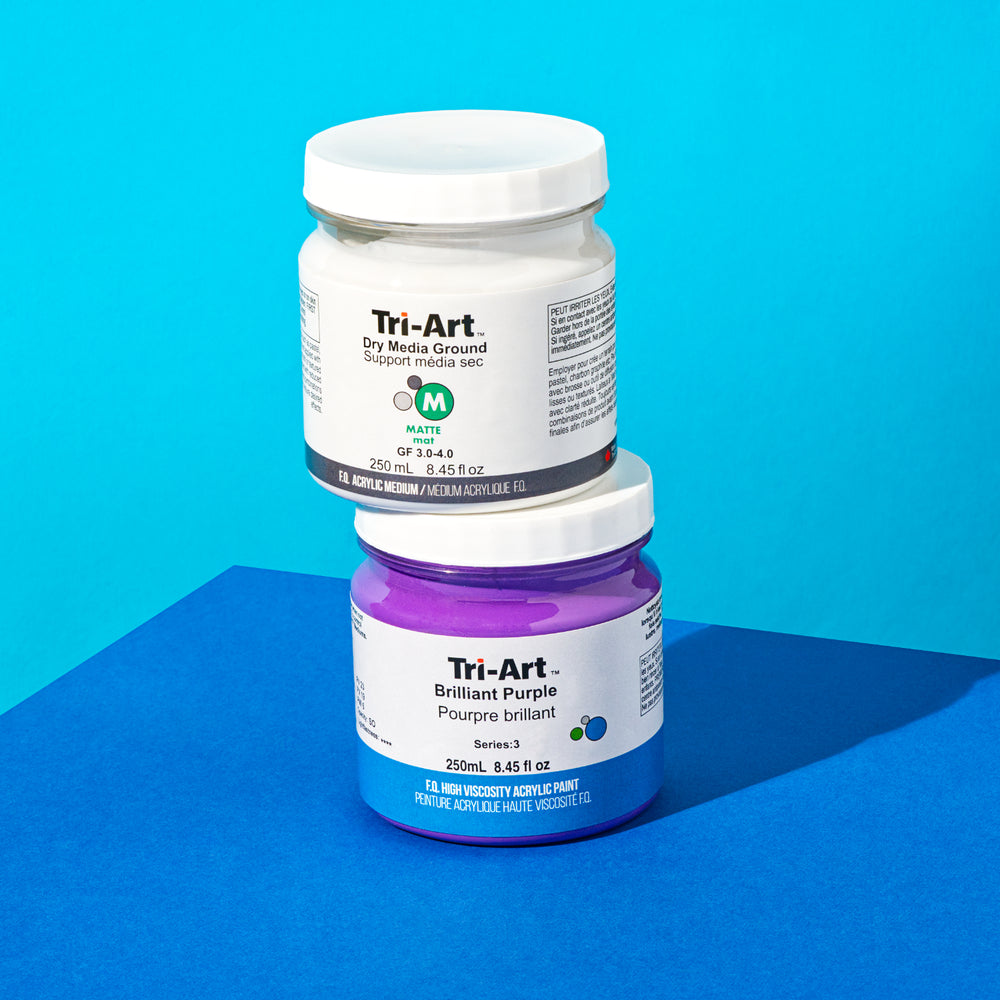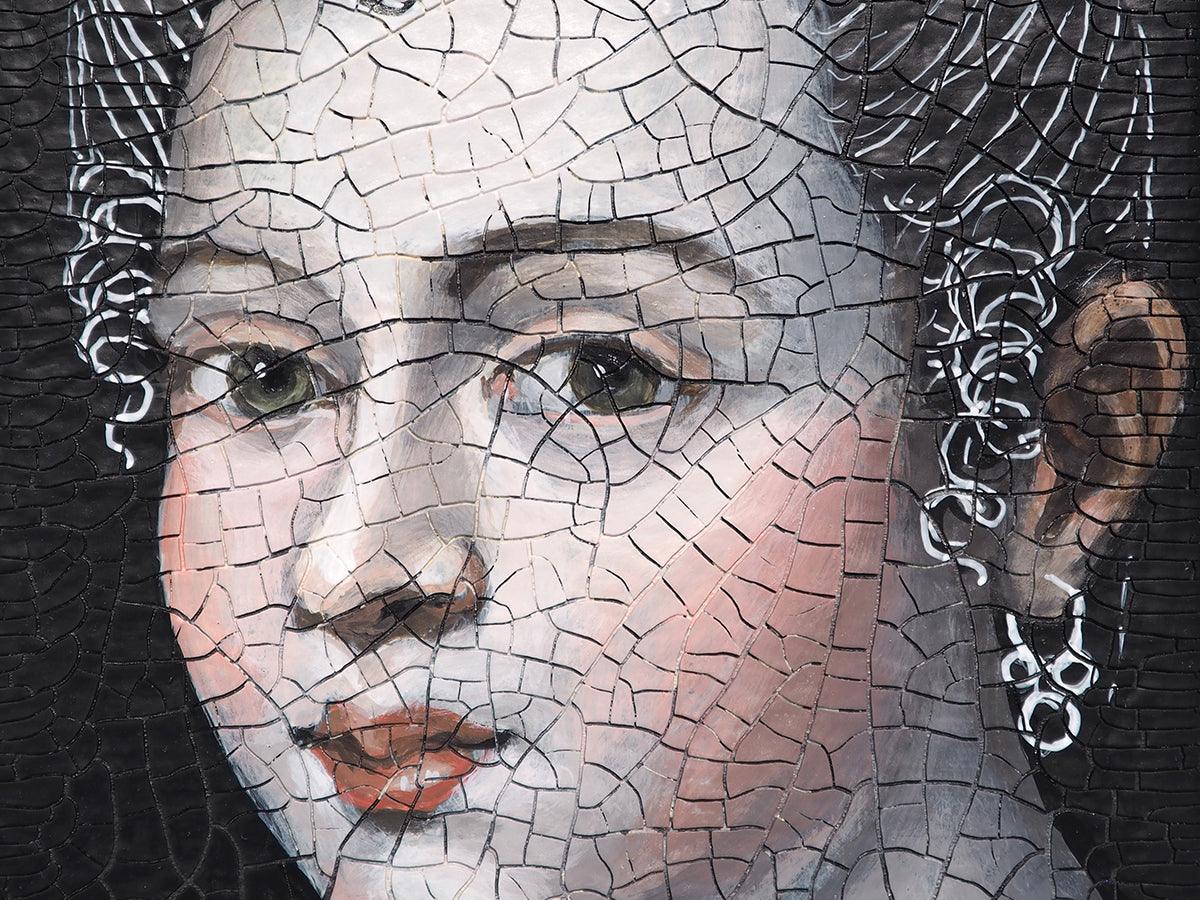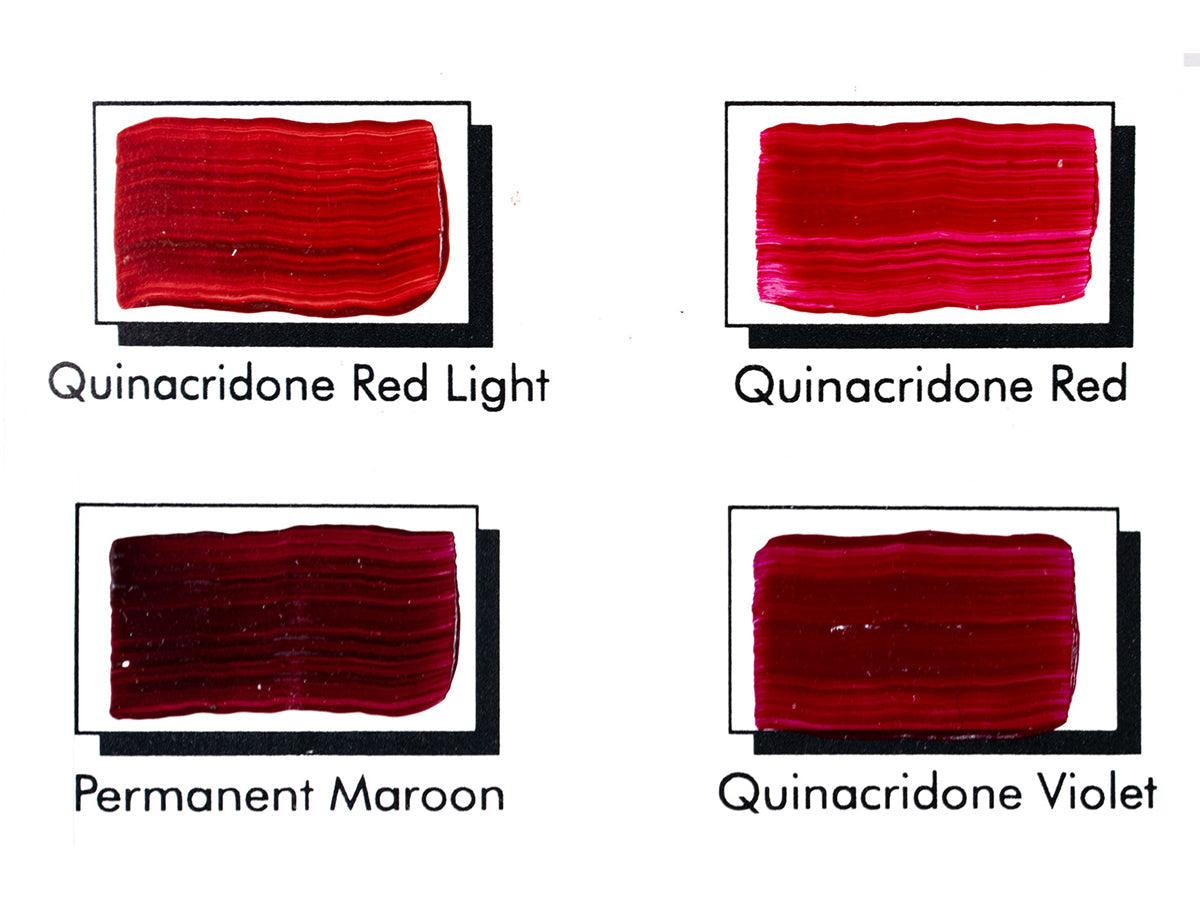WHAT IS CRACKLE GROUND?
Tri-Art’s Crackle Ground was a happy accident of our lab. A batch of our Topcoat Matte showed some curious issues, and with some experimentation Crackle Ground was born. Tri-Art’s Crackle Ground is a ready to use, single part, effect priming. Unlike other techniques to crack surfaces, Crackle Ground does not require multiple coats of paint or carefully managed dry times. Crackle Ground creates a drought-stricken earth effect. It can be used with great success to create a wide variety of surfaces. Antiquing effects are particularly popular – recreating aging cracks of oil paintings, frescoes, and china. Any number of techniques can be applied to the final surface of your crackle ground to achieve fresh and modern works.
Check out the work of our sponsored artist Keight Maclean and our own Rheni Tauchid, part of the Tri-Art family:


Crackle ground is a fun and alluring product, but unlike our other professional products, it breaks all the rules of best practice when it comes to painting. Previously on the Tri-Art Blog I explored the importance of choosing the right priming for your painting. I discussed the advantages of priming your own supports with acrylic gesso – ultimately imparting flexibility and stability to your painting. I furthermore detailed a simple method to test your gesso before applying it. A puddle of priming, allowed to dry, on a piece of card, canvas, or non-stick palette, should be quite flexible. If cracks form, I dissuaded you from using this product. So, what if you puddle looks like this?

Never fear! Here are the rules you should follow when using Crackle Ground, so you can break all of others.
In a hurry? Watch this short guide to using Tri-Art's Crackle Ground.
1) USE A SOLID, INFLEXIBLE SUPPORT
Crackle Ground, unlike our other professional gesso products, is very brittle, and generally unsuited to application on flexible supports like canvas. Instead, opt for supports like wood, bamboo, primed aluminum, or canvas panels. Check out what happens when gesso and crackle ground are applied to unstretched, high quality canvases.

Crackle ground pulls an incredible amount of tension while drying. The resulting canvas is deformed beyond recognition, while acrylic gesso, even non-traditional varieties like clear gesso, remain largely flat. The back of this samples showcases what will occur if Crackle Ground is used, even on stretched canvas. As the Crackle Ground dries, it will put the canvas under large amounts of tension, eventually the ground will crack, and the shapes you see will form. This effect, called cupping, is the same effect observed on very old, brittle oil paintings.

With all the tension of the canvas now being held in these cupped pieces of Crackle Ground, this layer, and those further applied, are liable to unintended cracking, and loss of adhesion over time. Thickly applied Crackle Ground on canvas is particularly vulnerable, and Crackle Ground on unprimed canvas is even more so.

In short – to ensure your crackle is intention and solidly adhered – use a solid support.
Shop solid supports from Tri-Art:
2) PRIME YOUR SUPPORT
The best way to set up your Crackle Ground for success is to apply it over a layer of professional artist’s quality priming, like Tri-Art’s gesso. Priming offers several benefits to your painting.
Priming will seal your support, making for an even crackle effect. Absorbent surfaces tend to make even application more difficult. Furthermore, sunk in areas of Crackle Ground may not crack.


Priming also critically imparts adhesion and flexibility to Crackle Ground. This is especially important if you choose to apply thicker layers of Crackle Ground or if opt to apply Crackle Ground to unsupported canvas. Check out this test canvas below. Applied to raw canvas, the resulting crackle is uneven where it has sunk in. Seen from the back of the canvas, despite being relatively thin, the ground has clearly pulled all the tension of the canvas into its typical cupped pattern. In contrast, the single layer of gesso has greatly reduced the cupping pattern, indicating that the canvas is still holding some tension. Crackle Ground applied to primed canvas is therefore less likely to unintentionally crack in the future, retaining some of the flexibility of canvas and acrylic gesso.




When priming your support, you can also take this opportunity to highlight your crackle with another colour. Tri-Art’s Black, Neutral Grey or Burnt Umber Gesso can effectively add contrast to your crackle pattern. Consider clear or canvas colour gesso if you wish to retain the colour of your support. Take care to ensure your priming is a well bound, high quality acrylic gesso, medium or paint, and that is completely dry. Failure to do so may result in poor adhesion or Crackle Ground or flaking of the priming.

Shop Tri-Art's wide range of professional quality, 100% acrylic gesso products:
3) MODIFY WITH CARE
Crackle Ground is carefully formulated product. Do not attempt to mix Crackle Ground with other mediums! Any additional acrylic will stop the ground from cracking. However, Crackle Ground can be lightly tinted. We recommend using Tri-Art Low Viscosity paints for this. Up to 2 drops of colour per mL of Crackle Ground has found to retain the crackle effect. We always recommend you test your mixture before final application. Highly tinting colours like Phthalo Blue, Phthalo Green, Red Oxide and Carbon Black are best used for this purpose. You can also use pouring techniques with Crackle Ground – drop Low Viscosity colours directly onto your surface to create high chroma colours that crack.


Shop Tri-Art's Low Viscosity colours:
If using other paints, thin them liberally with water and test a small amount of Crackle Ground before applying to your work. Too much paint will prevent Crackle Ground from working. Green painter’s tape makes an excellent surface for rapid testing your modified Crackle Ground.
4) NOT TOO THIN, NOT TOO THICK
Crackle Ground is nearly infallible, but it relies on a certain amount of product being applied to the surface to work. The best means of application is to spread the ground with a palette knife or similar tool. Make sure the ground is evenly level to your satisfaction, as this will determine the crack pattern.
Too little product will result in a matte, uncracked surface. If this occurs, simply allow the ground to dry and apply another layer of Crackle Ground to your surface. The thinner the application, the finer the pattern of cracks that form. To aide in creating a finer crack pattern, you can add up to 20% water by volume to Crackle Medium.
Thicker applications can be used to achieve larger crack patterns. The thicker your application the more the surface will take on its own topography. No more than 1/16 of an inch is recommended, as loss of adhesion becomes increasingly likely. Make sure to allow your ground to dry thoroughly. Thick applications should ideally be left for several days, if not longer to develop full adhesion to their support.


5) PAINT OR SEAL YOUR GROUND LAYER
Crackle Ground is absorbent and toothy. It is an excellent surface for both wet and dry media like graphite.
Because Crackle Ground is under bound, it will greatly benefit from being entirely coated in your choice of acrylic media. If you do not paint over the entire surface of your Crackle Ground, consider applying your choice of Tri-Art’s Topcoat’s or Final Finishes to give your work lasting durability.
Shop Tri-Art's top coats for acrylic paintings:
6) ENJOY YOUR FINISHED WORK FOR YEARS TO COME
If you’ve gotten this far, then you can be assured your work should last the tests of time. Tri-Art’s high-quality paints, mediums and grounds are all designed to bring you the stable chemistry of acrylics and all the fun of artistic exploration.
Bonus: Crackle Ground & Liquid Glass
Check out the work of our own Simon Ginsberg. Simon, in fact, designed this product himself! In these works, Simon has combined our Crackle Ground with Tri-Art's Liquid Glass for a mosaic effect.


Shop Tri-Art's Liquid Glass products:



